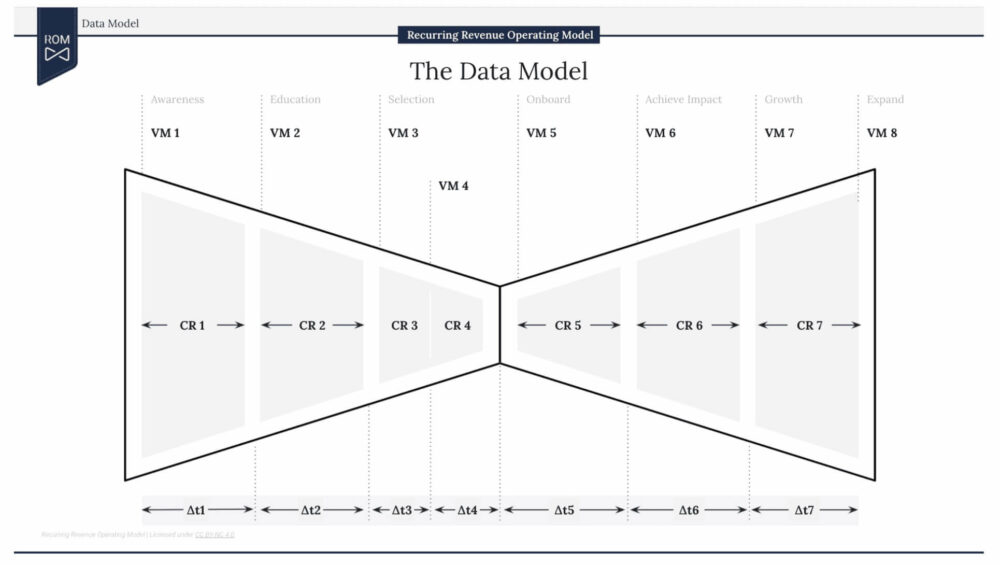Table of contents
Want to turn your business into a revenue-generating machine?
In this playbook, we’ll explore the “Revenue Architecture” framework, a powerful system to streamline your sales process and boost your bottom line. Learn how to set clear goals, track key metrics, and optimize your sales funnel with expert insights from Roee Hartuv, a Revenue Architect at Winning By Design.
Watch the full interview
Or listen to it on Spotify or Apple.
The “Revenue Architecture” framework
Jacco Van Der Kooij (founder of Winning By Design) wants to turn your business in an effective, efficient, “revenue factory”. For 16+ years, Winning By Design has been helping companies drive more predictable revenue using a framework they call “Revenue Architecture”. The idea is simple. Like a factory, your goal should be to deliver increasingly valuable products to customers, minimize your costs, and increase your profits.
Last week, I got to chat with Roee Hartuv (a Revenue Architect at Winning By Design) to learn more about how it works. I want to say up front, this is a pretty robust framework, so Roee and I could only get into a small part of it. So if you’re interested in learning and DIYing the framework at your company, you can read the book or take the course. Or, if you’re looking for guided help rolling this out at your company, you can reach out to Roee or the team directly to talk about the consulting they offer. To be clear, we’re not affiliated in any way, I just wanted to point you to more resources if you’re interested in learning more about Revenue Architecture.
To set the stage for our conversation, Winning By Design has multiple “models” they walk companies through. Roee and I only covered part of the “Data Model”: the metrics and formula they use to help set clear targets for lead generation, sales quotas, and expansion goals.
Use the “bowtie” to better visualize recurring revenue
Traditionally, marketing and sales performance is visualized in a funnel. You start at the top with measuring stages (like awareness) or metrics (like traffic) and work your way down until the deal is closed. And that’s where many companies measuring. The deal is won or lost, and the funnel journey is over.
But in reality, if you want recurring revenue, you need to measure all the stages that happen after the deal is won: onboarding, upgrades or expansion, and retention. These are what contribute to customers renewing their deal or staying subscribed to you.
So the first step to building a revenue factory is visualizing your company’s performance holistically, including what happens after each deal is closed, so that you can focus on increasing recurring revenue, not just new revenue.

Here’s an example. It might look intimidating, but once you understand their framework it’s pretty simple.
- VM = volume metric
- CR = conversion rate metric
- Δt = time metric
You can watch a full explainer of the bowtie model (slash EDM/rave) here.
On the left side of the bowtie, you measure the stages it takes to close the deal. Then on the right, you measure the stages required to drive retention, upgrades, or expansion.
Determine 4 kinds of metrics you’ll measure
Next, it’s time to add the metrics you’ll visualize in your bowtie. Winning By Design advocates 4 types of metrics your team should be tracking:
- Volume metrics (e.g. 4,000 leads)
- Conversion (e.g. 10% win rate)
- Time (e.g. 30 days)
- Cost = how much budget you spend at each stage
Roee says there aren’t one-size-fits-all metrics they prescribe. Instead, it’s crucial to decide on what you’re going to measure together with the rest of your team. These 4 types of metrics help ensure you’re tracking the right data points that are important for your business.
As we covered earlier, the left side of the bowtie should measure the key volume, conversion, time, and cost metrics to close a deal or acquire a paying customer. The right side of the bowtie should measure the same four types of metrics, related to dollar amounts. This could be ARR or MRR, and includes Average Contract Value, First Year Contract Value, onboarding (measuring how many accounts are “live” or activated), Gross Revenue Retention, etc.
Analyze historical data with your team
Once you decide what metrics you’ll measure and start visualizing them, Roee recommends reviewing them monthly with your team in an effort to understand your performance better.
Why are your conversion rates what they are? What contributes to them? How do other companies like us perform in these areas? Where is there room to improve?
To do the most accurate analysis, you’ll want to between 4 quarters and 2 years’ worth of historical data.
Use this to create a growth formula, to optimize your revenue factory
At this point, you’re able to visualize 1-2 years of historical data in your bowtie visual, and you’ve begun to analyze performance with your team to understand what impacts performance at each stage: where there’s room for improvement, and what levers you might pull to move the needle on it.
Now, you want to zoom in to find how much it took to close just 1 customer. For example, if you closed 300 deals (acquired 300 new customers), you’d divide all the metrics on the left side of the bowtie by 300. You’ll see how many sessions, leads, MQLs (marketing qualified leads), SQLs (sales qualified leads) it took to close one deal. You’ll see how much time it took at each stage. And you’ll see what your current conversion rates are between stages. And on the right side, one deal created $x revenue, and will expand to x amount over the next 3-5 years.
This is the starting point to analyze how effective and efficient your current “revenue factory” is.
This gives you a formula to start accurately projecting and planning to grow. Many companies assume if this is what it took to close 1 deal, they need to multiply all stages equally to hit their goal amount. But the purpose of this is to find more efficient ways of scaling.
“There are fantastic companies out there that are still doing phenomenally well. When they’re doing this exercise [they realize], ‘I need to increase the numbers. Everything looks great. Let’s focus on pouring more money and continue to grow.’
For most of us, it’s not like that. Money is not endless anymore like we had in 2021. So we’re all now doing 2025 planning and having those discussions, ‘This is what our numbers are. This is what we need. Can we create that amount of leads? Can we serve all those opportunities? Probably the answer is no. We don’t have the headcount. We don’t have the budget.’
And this is where you start having those discussions, ‘Okay. If I slightly improve the retention rate, would that get us closer? What is the balance of improving the retention rate, improving my performance on the right side, compared to improving how many deals or the win rate I’m doing on the acquisition part?’”
The point is that once you understand what it takes to generate the full recurring revenue impact from one closed deal or paying customer, you can play with optimizing each stage to figure out the best way to hit your targets.
Like Roee said, for some companies this simply means improving the metrics on the left and right side in tandem. But for many of us, this will show us that we’re maybe maxed out on how many signups or leads we can drive, and so we’ll look to squeeze out disproportionate performance in another stage we have more control over.
Build a scalable recurring revenue business with Databox
Watch our tutorial on how to design, build, and operate a scalable and sustainable recurring revenue business with Databox. More specifically, you’ll learn:
- How to track and visualize key metrics in your bow tie
- How to use comparison periods to identify problems or opportunities for improvement
- How to facilitate monthly and quarterly discussions by automating your reporting process













